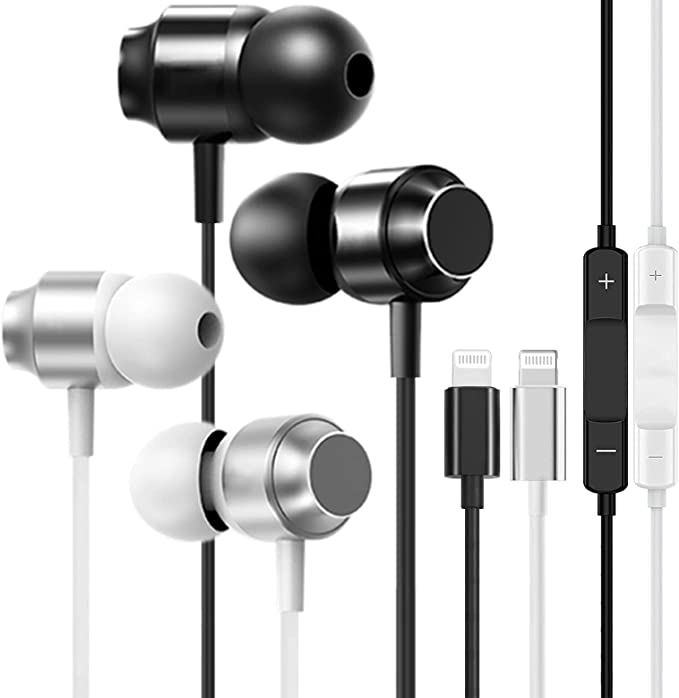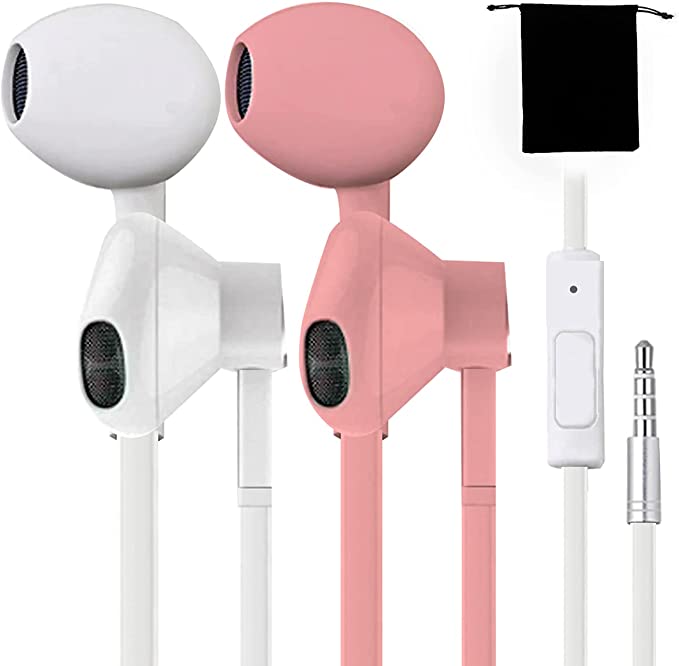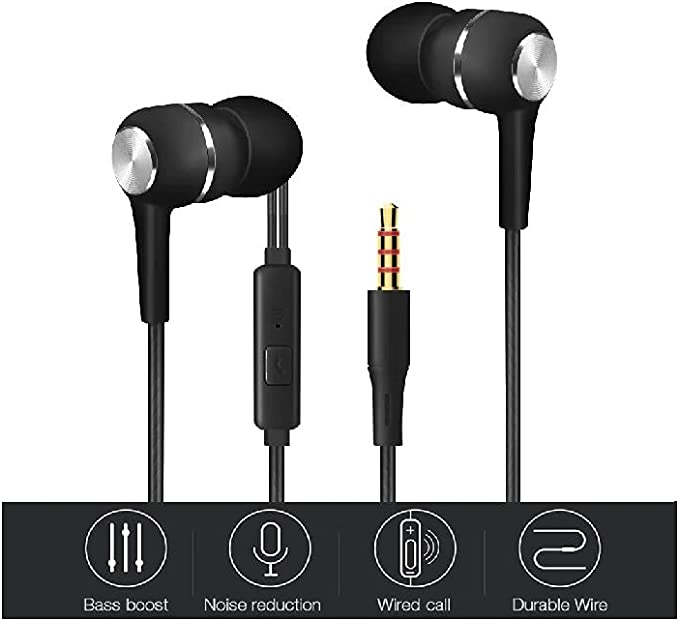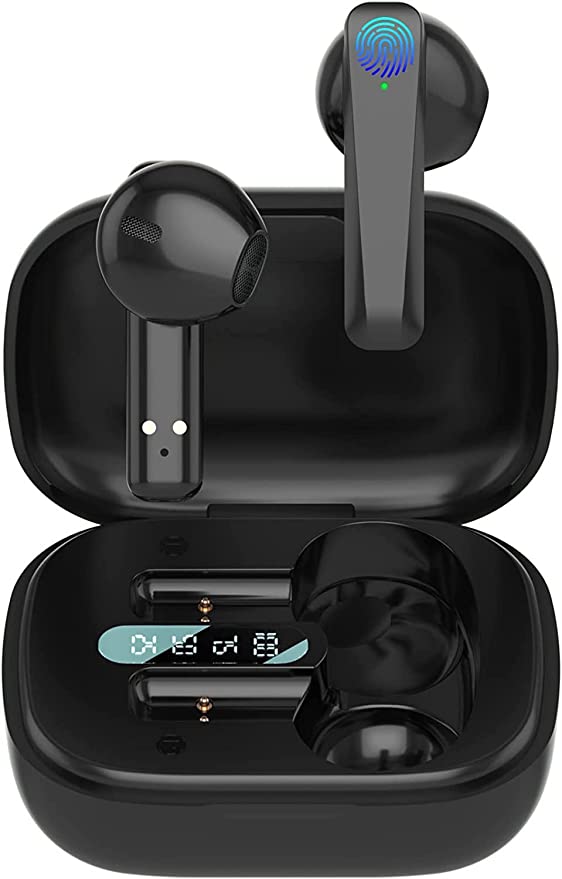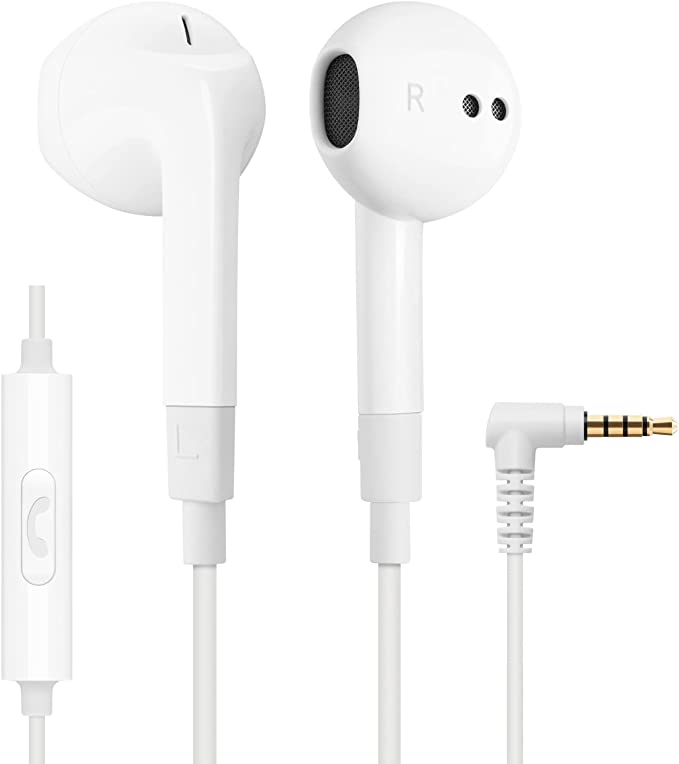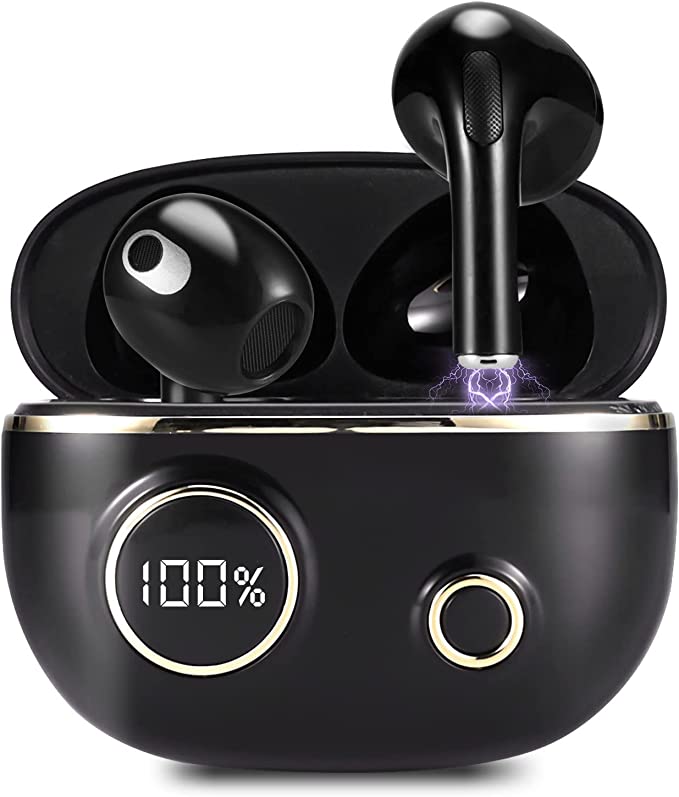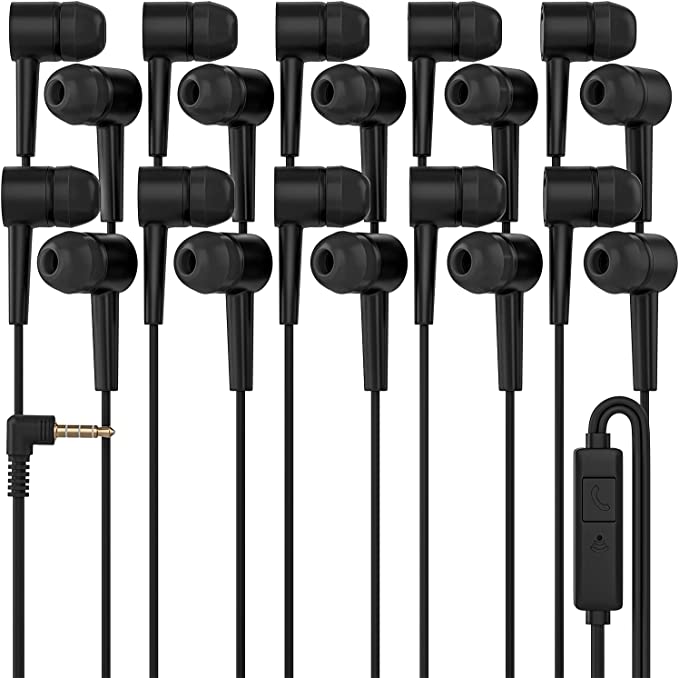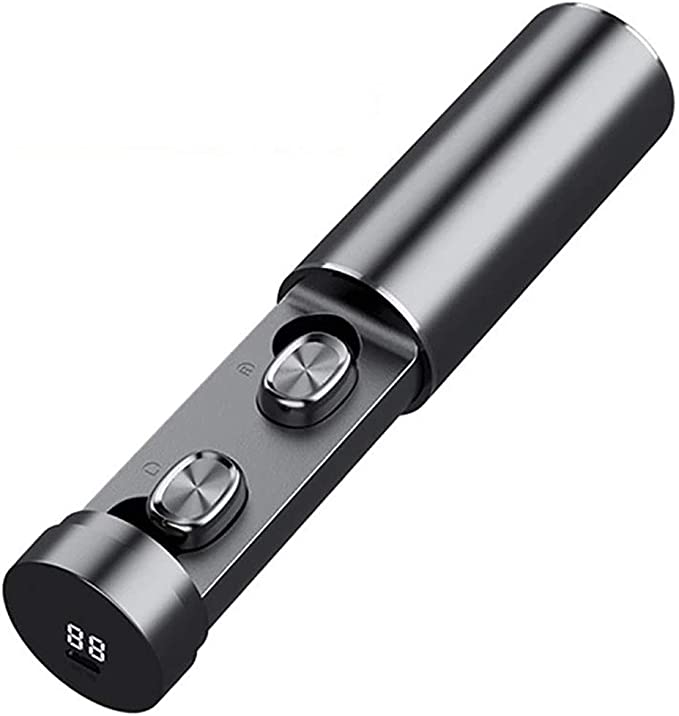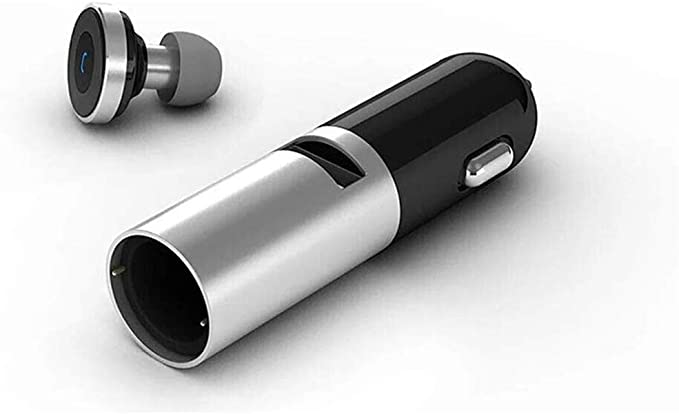Santana Besos by Carlos BES100 Wired Earbuds - Budget-Friendly Wired Earbuds for Easy Listening
Update on May 30, 2025, 7:02 a.m.
We live our lives to a soundtrack. It’s on the commute, during a focused work session, a wind-down walk, or a late-night gaming quest. And often, the unsung heroes delivering these soundscapes are the humble, unassuming wired earbuds. Tucked into pockets and bags, they’re the ever-reliable, plug-and-play companions. But have you ever paused to consider the century of scientific refinement and design ingenuity coiled within those simple wires and plastic shells?
Let’s take a moment, not to review a specific model, but to use an archetype – something like the Santana Besos by Carlos BES100 Wired Earbuds – as our specimen. This isn’t about brand superlatives; it’s about peeling back the layers of a typical, accessible pair of wired earbuds to appreciate the foundational audio science and thoughtful design principles that make them, and countless others like them, a ubiquitous part of our daily sonic tapestry. Prepare for a journey into the surprisingly intricate world of everyday audio.

The Acoustic Chamber: Crafting Comfort and Isolation
Before a single note even reaches your eardrum, the physical interface between the earbud and your ear sets the stage for the entire listening experience. The claim of a “comfortable ergonomic fit,” often highlighted for earbuds featuring soft rubber or silicone tips, is more than just a comfort platitude; it’s rooted in the science of human factors and acoustics.
The human ear, particularly the concha and ear canal, is a remarkably complex and individually varied structure. Ergonomics in earbud design strives to accommodate this diversity, aiming for a shape that distributes pressure evenly, minimizes contact points that could cause soreness, and stays securely in place during typical movement. Think of it as a bespoke handshake – a good fit feels natural and unintrusive. Those “soft rubber ear tips” are critical here. Their pliancy allows them to conform to the unique contours of your ear canal. This adaptability is not just about preventing them from falling out; it’s paramount for creating an effective acoustic seal.
This seal is the secret behind passive noise isolation. Imagine closing a window to reduce street noise – that’s precisely what a well-fitted earbud does for your ears. By forming a physical barrier, the ear tips obstruct a significant portion of ambient sound waves from the outside world from ever reaching your eardrum. There are no electronics involved in this, no batteries drained – just clever physical design. This is distinct from Active Noise Cancellation (ANC), a more complex technology that uses microphones and processing to create “anti-noise” to cancel out external sounds. For many everyday earbuds, effective passive isolation is the primary means of helping you focus on your audio content.
Consider the user’s world: a long commute on a rumbling train, an attempt to study in a bustling café, or simply wanting to immerse yourself in a podcast without cranking the volume to dangerous levels. In these moments, a comfortable, isolating fit isn’t a luxury; it’s a fundamental enhancer of the listening experience. Conversely, the subtle, creeping agony of a poorly fitting earbud – the pressure points, the constant need to readjust, the intrusion of every external chatter – can turn music into a nuisance. The science of fit, therefore, is the unsung foundation of good audio enjoyment.

The Heartbeat of Sound: Demystifying the Dynamic Driver
At the core of any earbud, the component responsible for the alchemical transformation of electrical signals into the rich tapestry of sound we perceive, is the driver. In the vast majority of earbuds like our representative Santana BES100, which mentions “8mm dynamic drivers,” this miniature marvel is a dynamic driver, a technology that has been the steadfast heartbeat of sound reproduction for nearly a century.
So, how does this tiny engine, often no larger than a pea, conjure everything from the deepest bass rumbles to the most delicate cymbal shimmer? The principle is an elegant application of electromagnetism, remarkably similar to how its much larger cousins in concert PAs or home stereo speakers operate. A dynamic driver typically consists of three key parts:
1. A diaphragm: A thin, lightweight membrane, often dome-shaped, which vibrates to create sound waves.
2. A voice coil: A finely wound coil of wire attached to the back of the diaphragm.
3. A magnet system: A small, powerful permanent magnet (like neodymium) that creates a fixed magnetic field around the voice coil.
When your music player sends an electrical audio signal down the earbud cable, this fluctuating current flows through the voice coil. According to Fleming’s left-hand rule, a current-carrying conductor in a magnetic field experiences a force. This force causes the voice coil – and the diaphragm attached to it – to move rapidly back and forth, mirroring the waveform of the audio signal. These vibrations push and pull the air in front of the diaphragm, creating compressions and rarefactions – pressure waves – that travel into your ear canal and are ultimately interpreted by your brain as sound.
The “8mm” designation refers to the approximate diameter of the diaphragm. While it’s a common audiophile notion that larger drivers can “move more air” and thus produce more powerful bass, driver size is but one variable in a complex acoustic equation. The material of the diaphragm (ranging from common plastics like PET to more exotic materials like beryllium or bio-cellulose in higher-end models), the design of the earbud housing (the acoustic chamber), the strength of the magnet, and the precise engineering of the voice coil all profoundly influence the final sound signature. For an 8mm driver, it’s a balancing act – small enough for compact in-ear designs, yet capable of producing a reasonably full spectrum of sound for everyday listening.
It’s fascinating to note that the dynamic driver, first patented by Chester W. Rice and Edward W. Kellogg at General Electric in 1924, has remained a dominant transducer technology due to its reliability, cost-effectiveness for mass production, and its inherent ability to produce a warm, engaging sound.
But a driver alone doesn’t dictate the final sonic character. This is where the subtle art and science of tuning comes in. Engineers “voice” the earbuds by making minute adjustments to the acoustic design – the shape and volume of the enclosure behind and in front of the driver, the use of acoustic damping materials, and even the design of the nozzle through which sound exits. The product description mentioning “exceptional sound quality, allowing you to hear every beat and experience every bass note” hints at a tuning designed for popular music, likely with a bit of emphasis in the bass and treble regions to create an engaging, “dynamic” feel. This tuning aims to shape the raw output of the driver to a desired frequency response curve, which is essentially a map of how loudly the earbud reproduces sound at different pitches.
To visualize, think of the diaphragm as a highly sophisticated drum skin, capable of vibrating thousands of times per second at different intensities to recreate not just simple beats but complex musical passages. It’s a miniature electromechanical orchestra working tirelessly right inside your ear.
The Unbroken Thread: The Enduring Utility of the 3.5mm Connection
In an era increasingly dominated by wireless protocols like Bluetooth, the steadfast presence of the 3.5mm wired connection on earbuds like the Santana BES100 might seem almost anachronistic to some. Yet, this veteran connector, with a lineage stretching back over a century, continues to offer a unique set of scientific and practical advantages that keep it relevant.
The 3.5mm connector, also known as a TRS (Tip-Ring-Sleeve) or TRRS (Tip-Ring-Ring-Sleeve, if it includes a microphone channel) plug, facilitates a direct, analog audio transmission. This means the electrical signal representing the sound wave travels as a continuous voltage from your audio source (phone, laptop, gaming controller) directly to the earbud’s drivers. Its beauty lies in its simplicity and the fundamental physics it leverages.
One of the most significant scientific benefits of this direct wired connection is the near-zero latency. Latency is the delay between when an audio signal is generated by a source and when it’s actually perceived by the listener. For wireless audio, the signal must be encoded, transmitted, received, and decoded, all of which introduces a small but sometimes perceptible delay. For everyday music listening, this might not be a deal-breaker. But for applications like competitive gaming, where hearing an opponent’s footstep fractions of a second faster can make all the difference, or when watching videos, where a mismatch between actors’ lip movements and their speech (lip-sync issues) can be jarring, the instantaneous nature of a wired connection is invaluable.
Furthermore, a wired connection is inherently free from the radio frequency interference that can occasionally plague wireless signals, leading to dropouts or glitches in the audio. The signal path is a closed circuit, less susceptible to the vagaries of the electromagnetic environment.
Another undeniable practical advantage is that wired earbuds require no charging. They draw their minuscule power requirements directly from the audio source. This means they are always ready to go, a reliable backup when your Bluetooth headphones inevitably run out of battery at the most inconvenient moment.
The history of this connector is quite remarkable. Its larger ancestor, the quarter-inch (6.35mm) jack, dates back to 1878, originally used in manual telephone switchboards. The 3.5mm miniature version gained widespread popularity with the advent of transistor radios in the mid-20th century and became the de facto standard for portable audio with the Sony Walkman in 1979. Its ubiquity across decades of audio devices, from hi-fi systems to personal computers and MP3 players, speaks to its robust design and enduring utility. While some modern smartphones have controversially omitted the dedicated 3.5mm port in favor of USB-C or Lightning for audio (often requiring an adapter, or dongle, for wired headphones), its presence on many laptops, desktops, gaming consoles, and affordable audio devices ensures its continued relevance. For users who prioritize a stable, lag-free, and always-ready listening experience, the humble 3.5mm jack remains a trusted friend.
The Subtle Art of Conversation: Making Your Voice Heard
Earbuds have evolved from purely listening devices to indispensable communication tools. The inclusion of a “voice isolating microphone,” as mentioned for the Santana BES100, signifies this dual role. While the term “isolating” might conjure images of advanced noise cancellation, in budget-friendly wired earbuds, its meaning and the underlying science are often more straightforward, yet crucial for everyday usability.
At its core, a microphone is a transducer that converts sound waves (like your voice) into electrical signals. Most earbuds utilize miniature Electret Condenser Microphones (ECMs) due to their small size, good sensitivity, and affordability. When you speak, the sound waves cause a tiny, permanently charged diaphragm within the microphone to vibrate. This vibration changes the capacitance between the diaphragm and a fixed backplate, generating a fluctuating electrical voltage that mirrors your speech.
So, what does “voice isolating” typically imply in this context, especially without the complex digital signal processing (DSP) found in high-end noise-canceling microphones?
1. Directionality by Design: The microphone’s physical placement and the acoustic design of its port (the tiny opening it “hears” through) can be optimized to be more sensitive to sound originating from the direction of the user’s mouth and less sensitive to sounds arriving from other angles. This is a form of passive directionality. Think of it like cupping your hand around your ear to hear a distant sound better – you’re physically focusing the sound waves.
2. Frequency Response Tailoring: The microphone system might be inherently more responsive to the primary frequencies of human speech (roughly 300 Hz to 3400 Hz) and less so to very low rumbles or very high-pitched noises. This doesn’t actively remove background noise but can make the voice stand out more against it in the resulting electrical signal.
3. Proximity Effect: Users naturally hold or position the microphone module (if it’s on an in-line remote) relatively close to their mouth. Sound intensity drops off rapidly with distance (inverse square law), so your voice will be significantly louder at the microphone than most ambient sounds originating further away.
It’s important to distinguish this from Active Noise Cancellation (ANC) for microphones, often found in more premium headsets. ANC microphones use additional mics to capture ambient noise, then an internal processor generates an “anti-noise” signal to cancel it out before your voice is transmitted. The “voice isolation” in simpler earbuds is more about optimizing the capture of your voice relative to its surroundings through clever, but less complex, acoustic and electronic design.
The challenge of clear communication is universal: trying to be understood over the din of a coffee shop, the clatter of a keyboard during a remote meeting, or the sounds of a busy street. While a budget earbud’s microphone won’t perform miracles in extremely loud environments, these “voice isolating” techniques aim to provide a noticeable improvement in intelligibility for everyday calls and casual voice chats, ensuring your message gets through with reasonable clarity. It’s a testament to how fundamental engineering principles can enhance a core function even in an affordable package.
Everyday Conveniences: The Little Things That Count
Beyond the core functions of delivering sound and capturing voice, the user experience of wired earbuds is often shaped by a collection of seemingly small, yet practically significant, design choices. These conveniences, like in-line controls and tangle-resistant cables, might not grab headlines, but they address common user frustrations and contribute to a smoother, more enjoyable interaction with our audio.
Take the in-line remote with built-in controls, a feature noted for the Santana BES100 (“TAKE TOTAL CONTROL WITH BUILT-IN CONTROLS”). This little module, typically positioned кандидатов on one of the earbud cables, allows for volume adjustment, play/pause, skipping tracks, and answering or ending calls without needing to reach for your phone or host device. The science behind it is straightforward: the buttons within the remote are simple electrical switches. Pressing a button completes a specific circuit, sending a coded electrical signal (often through variations in resistance or by shorting specific pins on the TRRS connector if a microphone is present) to the connected device. The device’s operating system then interprets this signal and executes the corresponding command. It’s a basic application of circuit theory, but its impact on usability is substantial. Imagine trying to quickly lower the volume as someone starts speaking to you, or answering an incoming call while your phone is buried in a bag – the in-line remote makes these actions instantaneous and effortless.
Then there’s the perennial bane of wired earbud users: the dreaded tangled cable. The claim of a “Tangle Free Cable Feature” addresses this universal grievance. While no cable is entirely immune to the mischievous whims of pocket goblins, certain design approaches can significantly mitigate the issue. Often, this is achieved through:
1. Flat Cable Geometry: Traditional round cables can easily twist and loop over themselves in multiple dimensions, leading to complex knots. Flat, ribbon-like cables, due to their geometry, have a reduced tendency to kink and twist in this manner. They are more inclined to coil smoothly or lie flat, making them less prone to forming those infuriating bird’s nests. The physics here relates to the cable’s bending stiffness being different along its different axes.
2. Cable Material and Durometer: The type of plastic or rubber used for the cable sheath and its stiffness (durometer) can also influence its propensity to tangle. A slightly stiffer, slicker cable might resist coiling up on itself more effectively than a very soft, grippy one.
3. Braided Cables (Less Common in Budget Models): Though not typically found in this price tier, braided cables, where multiple insulated conductors are woven together, can also offer good tangle resistance and durability.
These features might seem minor, but they directly impact the daily convenience of using the earbuds. A cable that comes out of your pocket relatively untangled saves a few moments of frustration. Controls that are readily accessible prevent missed calls or fumbling with your device in public. These are examples of user-centered design, where even small engineering considerations can add up to a significantly more pleasant overall experience. They are the quiet facilitators of a seamless audio life.
The Sound Check: Price, Perception, and Prudence
When navigating the world of audio equipment, especially at the more accessible end of the spectrum, it’s wise to approach marketing claims with a discerning ear and a basic understanding of what’s realistically achievable. Terms like “Surround Sound,” listed as a “Special Feature” for a product like the Santana BES100, warrant a moment of scientific reflection, particularly when considering its $12.99 price point.
True, multi-channel surround sound, the kind you experience in a cinema or with a dedicated home theater system, involves multiple discrete audio channels delivered to strategically placed speakers that envelop the listener. This creates a three-dimensional sound field where sounds can be perceived as coming from front, back, sides, above, and below. Replicating this experience faithfully through a pair of earbuds with only two drivers (one for each ear) is, from a purely physical standpoint, not possible in the same way.
So, what does “Surround Sound” likely mean in the context of stereo earbuds at this price? It most often refers to virtual surround sound or enhanced stereo imaging. This is typically achieved through psychoacoustic processing (either on the source device or, less commonly, via very simple analog circuitry within the earbuds themselves, though the latter is rare and rudimentary at this price). These techniques manipulate the phase, timing, and equalization of the stereo audio signals to trick the human brain into perceiving a wider, more spacious soundstage than standard stereo would typically provide. Our auditory system uses subtle differences in the sound arriving at each ear (interaural time differences and interaural level differences) to localize sound sources. Virtual surround sound algorithms attempt to simulate these cues for a more immersive, albeit not genuinely multi-channel, experience. For budget earbuds, if any specific processing is involved at all, it’s likely to be a fairly basic stereo widening effect. Often, the term might even be used more loosely to simply describe a stereo sound that feels “open” or “spacious” due to the driver tuning and acoustic design, rather than any active processing.
The key is to manage expectations. While you won’t get a true 7.1 channel cinematic experience from $12.99 earbuds, a well-implemented stereo widening effect can make games and movies feel a bit more engaging.
This brings us to the broader “equation” of this price point. What kind of audio science and overall user experience can one realistically anticipate for such a modest investment? The answer lies in the maturity and mass production of foundational audio technologies. The dynamic driver, the 3.5mm connector, basic microphone capsules, and simple in-line controls are all technologies that have been refined over decades. Their manufacturing processes are highly optimized, allowing for reliable, functional components to be produced at a very low cost. Therefore, for $12.99, you can expect: * Functional Sound Reproduction: Drivers capable of covering the main audible frequency range, allowing you to enjoy music, podcasts, and videos clearly. * Basic Communication: A microphone that allows for intelligible voice calls in reasonably quiet environments. * Essential Comfort and Fit: Ergonomic designs with standard ear tip options for decent passive noise isolation and wearability. * Reliable Connectivity: The dependable, low-latency performance of a wired connection. * Basic Convenience Features: In-line controls for ease of use.
What you are less likely to get, and shouldn’t expect, are the hallmarks of premium audio: ultra-high-fidelity sound with nuanced detail and perfect tonal balance, advanced active noise cancellation, sophisticated microphone arrays with crystal-clear voice capture in noisy settings, premium build materials, or cutting-edge wireless features.
It’s also worth a gentle reminder about healthy listening habits. Regardless of the price or perceived quality of your earbuds, listening at excessively high volumes for extended periods can lead to noise-induced hearing loss. The World Health Organization (WHO) recommends keeping the volume at a moderate level (e.g., below 60% of maximum) and taking regular listening breaks. The passive noise isolation offered by a good in-ear seal can actually help here, as it allows you to hear your audio clearly at lower volumes by reducing the need to overcome background noise.
Ultimately, understanding the science behind what’s possible at different price points empowers prudent consumer choices. It allows us to appreciate the remarkable accessibility of functional audio technology while maintaining realistic expectations about performance and features.

Coda: The Ongoing Symphony of Simple Science
As we unplug from this exploration, it’s clear that even the most unassuming pair of wired earbuds, perhaps epitomized by a device like the Santana BES100, is far more than just an assembly of wires and plastic. It’s a pocket-sized testament to a rich history of scientific discovery and engineering ingenuity. From the intricate dance of electromagnetism within its dynamic drivers to the fundamental principles of acoustics shaping its sound and isolating you from the noise, these everyday companions are miniature marvels.
We’ve seen how the anechoic legacy of the 3.5mm jack provides a steadfastly reliable audio pathway, how basic ergonomic considerations translate into hours of comfortable listening, and how even simple microphone designs strive to bridge distances with clarity. The subtle physics behind a tangle-resistant cable or the straightforward circuitry of an in-line remote all play their part in this quiet symphony of applied science.
While they may not boast the cutting-edge complexities of their more expensive, feature-laden counterparts, these accessible audio tools democratize the experience of personal sound. They underscore a crucial point: good, functional design and the application of well-understood scientific principles can deliver immense everyday value, often in packages so familiar we almost cease to notice their inherent cleverness.
So, the next time you plug in your trusty wired earbuds, take a moment. Listen not just to the music, the podcast, or the voice on the other end of the line, but also, perhaps, to the faint, century-long echo of innovation they carry within them. It’s an invitation to look at all the everyday technology around us with a renewed sense of curiosity and appreciation for the elegant, often simple, science that makes our modern lives resonate.
